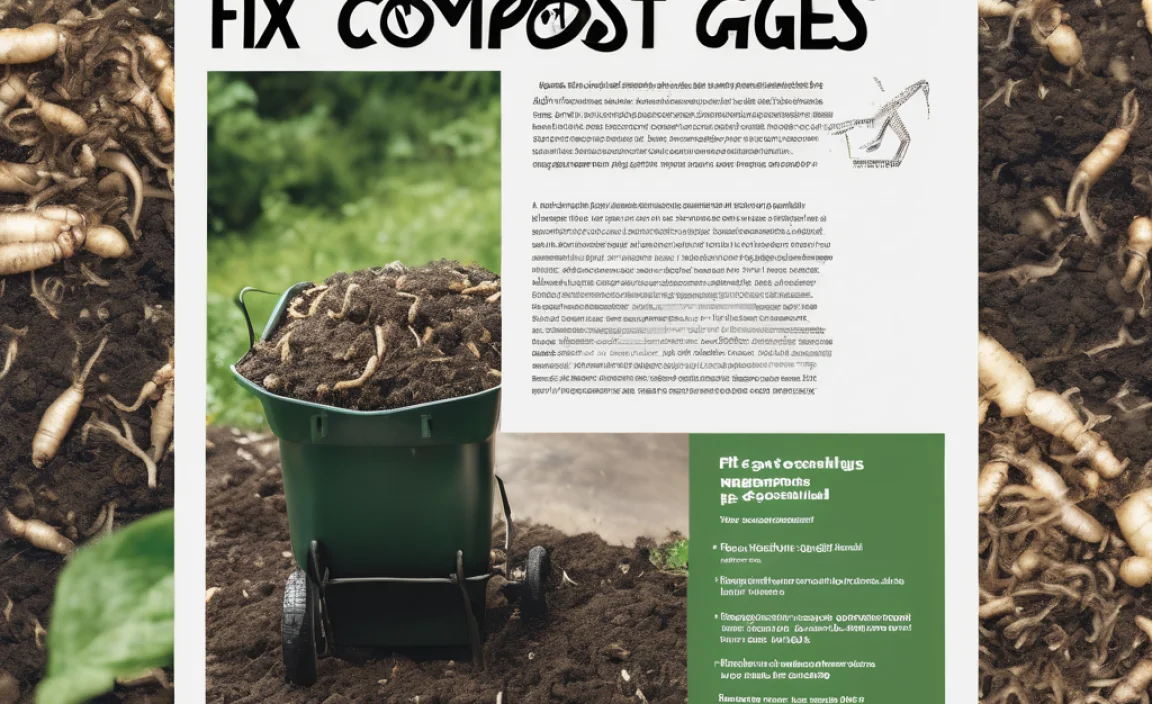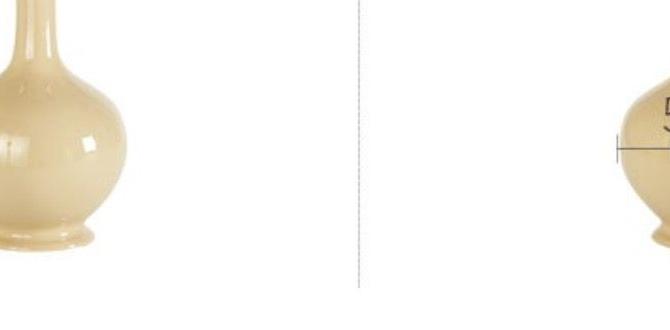Yes, wind chill can absolutely affect your water pipes! While wind chill doesn’t change the actual temperature, it makes the air feel colder, speeding up heat loss from exposed pipes. This increased heat loss can cause pipes to freeze and potentially burst. Taking preventative measures is key to protecting your plumbing.
Winter is coming, and with it comes the worry about freezing pipes. It’s a common concern for homeowners and renters alike. You might be thinking, “Will the wind chill cause my pipes to freeze?” It’s a valid question! Understanding how wind chill affects your pipes can save you from costly repairs and headaches. Don’t worry, this guide will break it down and provide simple steps to protect your plumbing.
We’ll walk through what wind chill actually is, how it impacts your pipes, and what you can do to prevent freezing. Get ready to learn some easy and effective tips to keep your water flowing smoothly all winter long!
Understanding Wind Chill and Its Impact
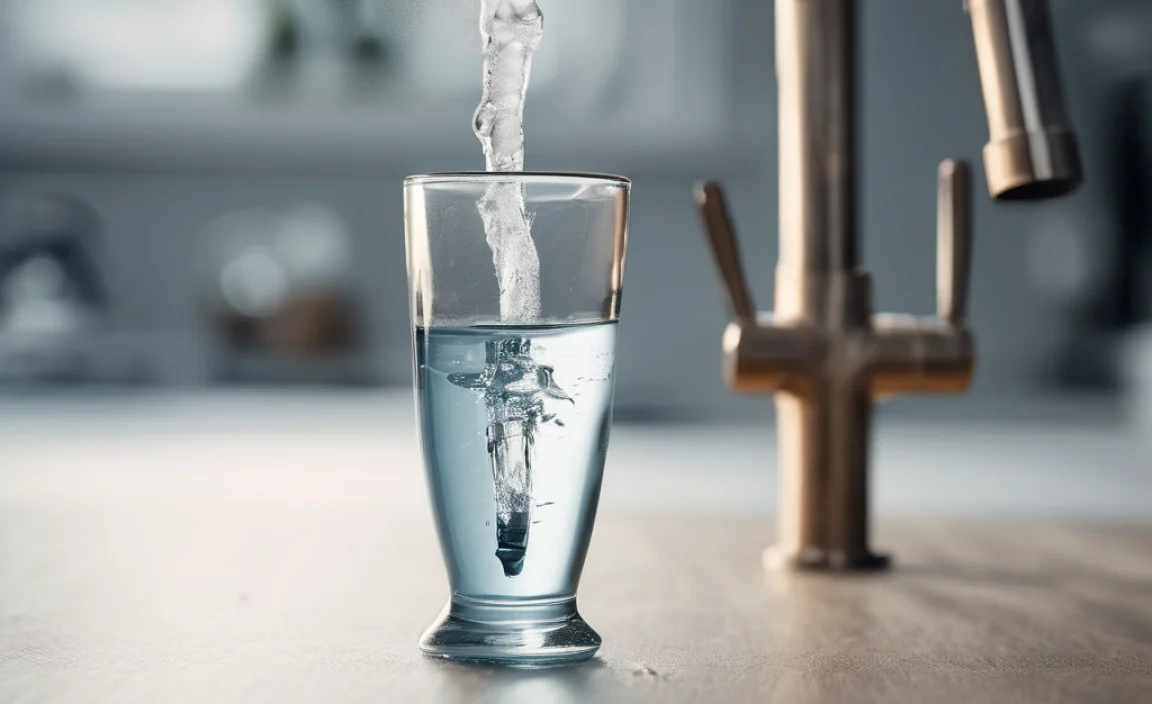
Wind chill is often misunderstood. It’s not the actual temperature of the air, but rather how cold the air *feels* on your skin when the wind is blowing. This “feels like” temperature is important because it affects how quickly objects, including your water pipes, lose heat.
What Exactly is Wind Chill?
Wind chill is the cooling effect of wind on exposed skin. When there’s no wind, a thin layer of warm air surrounds your body, insulating you from the colder air. Wind disrupts this layer, carrying away heat faster. The stronger the wind, the faster you lose heat, and the colder it feels.
The National Weather Service provides a wind chill chart to illustrate this effect. For example, a temperature of 30°F with a 15 mph wind feels like 19°F. That’s a significant difference!
You can find the National Weather Service wind chill chart here: https://www.weather.gov/safety/cold-wind-chill-chart
How Wind Chill Affects Water Pipes
Now, let’s connect this to your water pipes. Even if the air temperature is above freezing (32°F or 0°C), the wind chill can make exposed pipes much colder. This is especially true for pipes located:
- In unheated areas like crawl spaces or garages
- Along exterior walls
- Under sinks in exterior walls
- Outside, such as sprinkler systems
The wind accelerates the rate at which these pipes lose heat. If the water inside the pipes gets cold enough, it can freeze. And as we all know, water expands when it freezes, which can lead to burst pipes. Burst pipes can cause significant water damage, leading to costly repairs.
Identifying Vulnerable Pipes
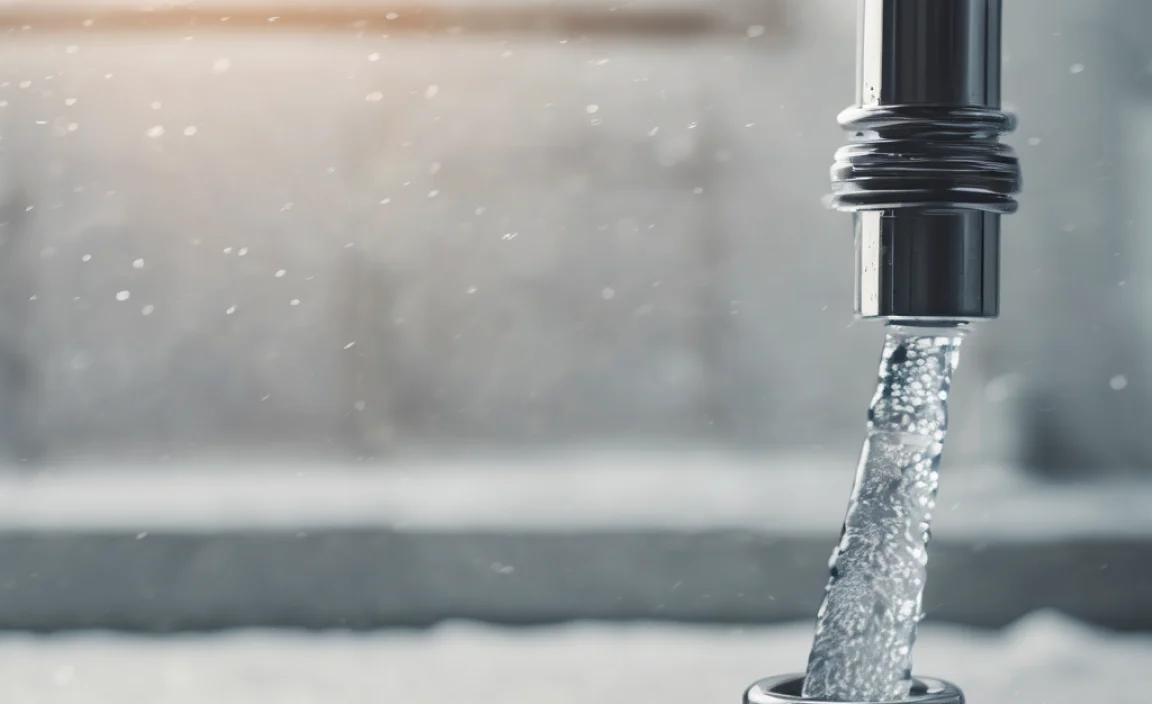
Before the really cold weather hits, it’s a good idea to inspect your home for pipes that might be at risk. Here’s what to look for:
- Location: Pipes in unheated or poorly insulated areas are prime candidates for freezing.
- Exposure: Pipes running along exterior walls or outside are more vulnerable to wind chill.
- Insulation: Check if your pipes are already insulated. If not, they’re at greater risk.
- Cracks or gaps: Look for any cracks or gaps in your home’s foundation or walls that could allow cold air to reach your pipes.
Make a list of these vulnerable pipes. This will help you prioritize your protection efforts.
Step-by-Step Guide to Protecting Your Pipes
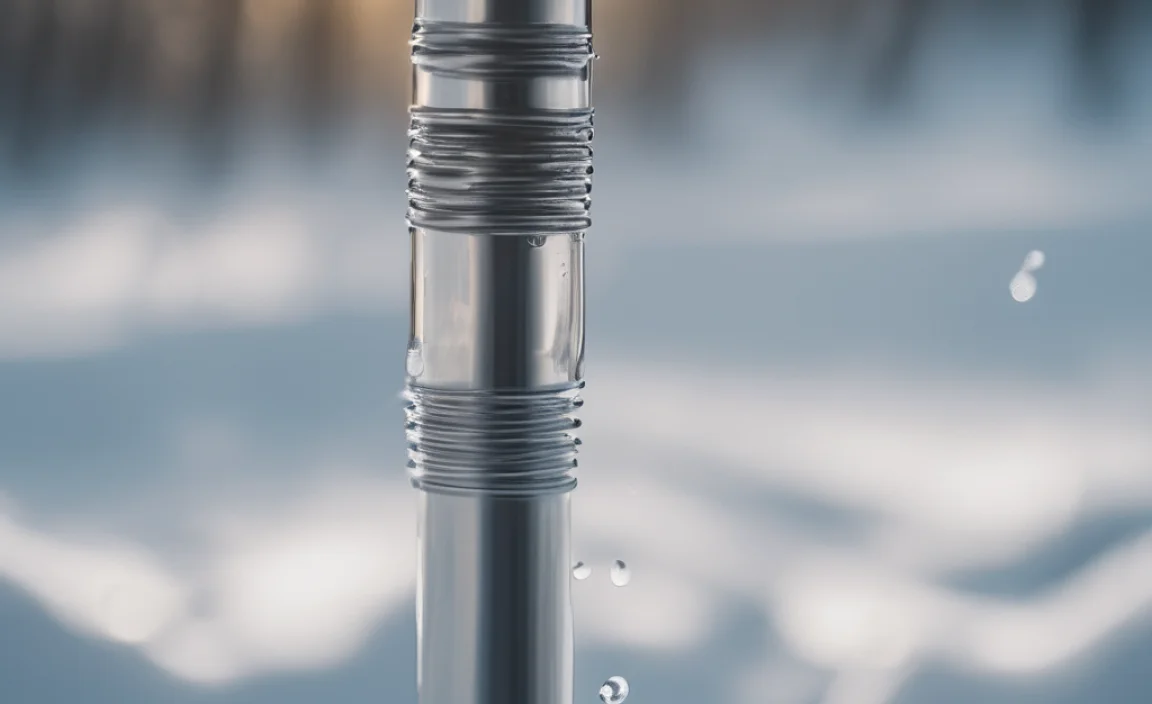
Protecting your pipes from freezing doesn’t have to be complicated or expensive. Here’s a step-by-step guide to keep your water flowing this winter:
- Insulate Exposed Pipes: This is the most effective way to prevent freezing. You can use foam pipe insulation sleeves, heat tape, or even old newspapers wrapped securely around the pipes.
- Seal Cracks and Gaps: Use caulk or spray foam insulation to seal any cracks or gaps in your foundation or walls. This will prevent cold air from reaching your pipes.
- Let Faucets Drip: When temperatures are expected to drop below freezing, let a faucet drip slightly. The moving water makes it harder for the water to freeze. Choose a faucet that’s on an outside wall.
- Open Cabinet Doors: Open cabinet doors under sinks to allow warm air to circulate around the pipes.
- Heat Unheated Areas: If you have pipes in unheated areas like a garage or crawl space, consider using a space heater to keep the temperature above freezing. Be sure to use space heaters safely!
- Disconnect and Drain Outdoor Hoses: Before winter arrives, disconnect your garden hoses and drain any water from the pipes. Insulate the outdoor faucets with faucet covers.
- Know Where Your Main Water Shut-Off Valve Is: In case a pipe does burst, knowing how to quickly shut off your water can minimize damage.
Choosing the Right Insulation
There are several types of pipe insulation available. Here’s a quick comparison:
| Type of Insulation | Pros | Cons | Best For |
|---|---|---|---|
| Foam Pipe Sleeves | Easy to install, inexpensive, good insulation | Can be bulky, may not fit in tight spaces | Straight pipes in accessible areas |
| Heat Tape | Provides direct heat, good for hard-to-reach areas | Requires electricity, can be a fire hazard if not installed correctly | Pipes in very cold areas or with a history of freezing |
| Fiberglass Wrap | Good insulation, fire-resistant | Can be itchy to handle, requires careful installation | Larger pipes or pipes needing fire protection |
| Newspaper/Cloth Rags | Inexpensive and Recyclable | Not the most effective solution, use only as a temporary solution | Short-term emergency protection |
Choose the insulation that best fits your needs and budget. Remember, any insulation is better than none!
Safety First!
When working with electricity or power tools, always follow safety precautions:
- Turn off the power at the breaker before working with electrical components.
- Wear safety glasses when cutting or installing insulation.
- Read and follow the manufacturer’s instructions for all products.
Long-Term Solutions for Pipe Protection
While the above steps are effective for short-term protection, consider these long-term solutions for ongoing peace of mind:
- Improve Home Insulation: Insulating your walls, attic, and crawl space will help keep your entire home warmer, reducing the risk of frozen pipes.
- Reroute Pipes: If possible, reroute pipes away from exterior walls to warmer, interior locations.
- Install a Smart Thermostat: A smart thermostat can automatically adjust the temperature in your home, ensuring it stays above freezing even when you’re away.
- Professional Inspection: Have a plumber inspect your plumbing system annually to identify potential problems before they become major issues.
Dealing with Frozen Pipes
Despite your best efforts, pipes can still freeze. Here’s what to do if you suspect a frozen pipe:
- Don’t Panic: The first step is to remain calm.
- Turn Off the Water: Immediately turn off the main water supply to prevent further damage if the pipe bursts.
- Open Faucets: Open the faucets served by the frozen pipe. As the ice melts, the water will need somewhere to go.
- Apply Heat: Use a hair dryer, heat lamp, or warm towels to gently warm the frozen pipe. Start warming the pipe closest to the faucet. Never use an open flame!
- Monitor for Leaks: As the pipe thaws, watch carefully for leaks. If you see any leaks, turn off the water again and call a plumber.
- Call a Plumber: If you’re unable to thaw the pipe yourself, or if you suspect significant damage, call a licensed plumber immediately.
Preventing Burst Pipes
The key to minimizing damage from frozen pipes is to prevent them from bursting. Here’s how:
- Act Quickly: The sooner you thaw a frozen pipe, the less likely it is to burst.
- Apply Heat Gradually: Avoid using high heat, which can cause the pipe to burst.
- Monitor Carefully: Keep a close eye on the pipe as it thaws, and be prepared to shut off the water if necessary.
Cost-Benefit Analysis of Pipe Protection
Investing in pipe protection measures is a smart financial decision. Consider the costs of prevention versus the potential costs of dealing with burst pipes:
| Prevention Measures | Estimated Cost | Potential Costs of Burst Pipes | Estimated Cost |
|---|---|---|---|
| Pipe Insulation | $10 – $50 per pipe | Water Damage Repair | $1,000 – $10,000+ |
| Caulk/Spray Foam | $5 – $20 per can | Plumbing Repairs | $200 – $1,000+ |
| Faucet Covers | $5 – $15 per faucet | Mold Remediation | $500 – $5,000+ |
| Heat Tape | $20 – $50 per pipe | Increased Insurance Premiums | Variable |
As you can see, the cost of prevention is significantly lower than the potential costs of dealing with burst pipes. Protecting your pipes is an investment in your home’s long-term health and your financial well-being.
FAQ: Wind Chill and Water Pipes
1. At what temperature will pipes freeze?
Pipes can start to freeze when temperatures drop to 20°F (-6°C) or lower, especially when combined with wind chill. However, the exact temperature depends on factors like pipe location and insulation.
2. Does running water prevent pipes from freezing?
Yes, letting a faucet drip slightly can help prevent pipes from freezing. The moving water makes it harder for ice to form.
3. How do I insulate my pipes?
You can insulate your pipes using foam pipe sleeves, heat tape, or even old newspapers wrapped securely around the pipes. Make sure the insulation covers the entire pipe, especially near joints and elbows.
4. What should I do if my pipes freeze?
If your pipes freeze, turn off the main water supply, open the faucets served by the frozen pipe, and gently warm the pipe with a hair dryer or warm towels. If you can’t thaw the pipe yourself, call a plumber.
5. Are some pipes more prone to freezing than others?
Yes, pipes in unheated areas like crawl spaces or garages, along exterior walls, or outside are more prone to freezing.
6. Can wind chill really make a difference?
Absolutely! Wind chill significantly increases the rate at which pipes lose heat, making them more susceptible to freezing even if the air temperature is above freezing.
7. Is heat tape safe to use on pipes?
Heat tape can be safe to use if installed correctly and according to the manufacturer’s instructions. However, it can be a fire hazard if not used properly. Always use heat tape that is certified by a recognized testing laboratory.
Conclusion
So, does wind chill affect water pipes? The answer is a resounding yes! Wind chill can significantly increase the risk of frozen and burst pipes. But don’t let that scare you. By taking simple preventative measures like insulating your pipes, sealing cracks, and letting faucets drip, you can protect your plumbing and avoid costly repairs. Remember, a little preparation goes a long way in keeping your water flowing smoothly all winter long. Stay warm and stay proactive!

